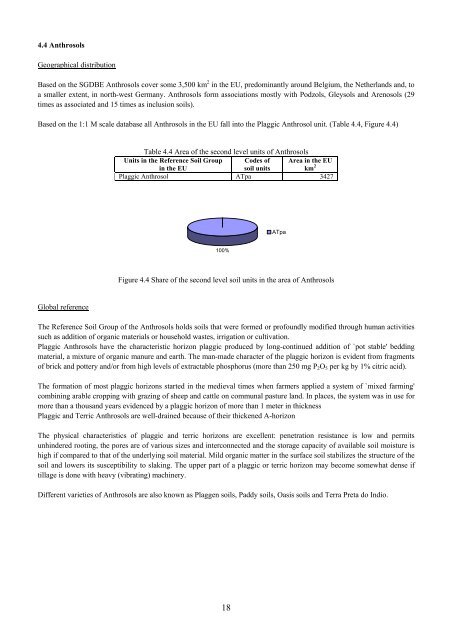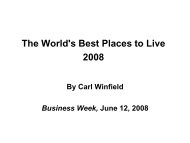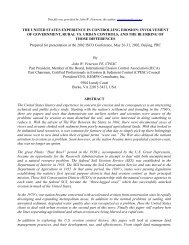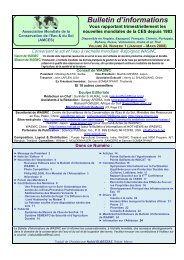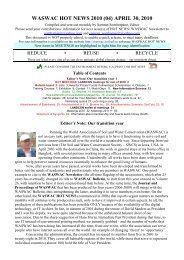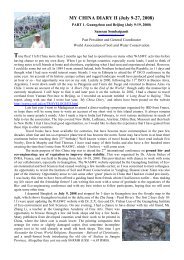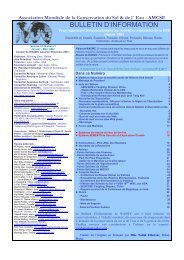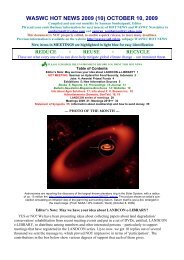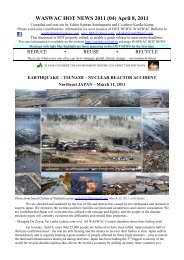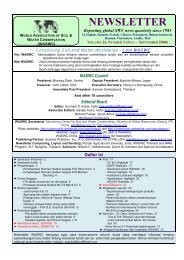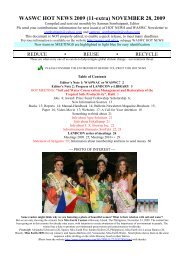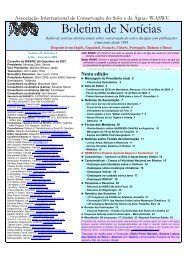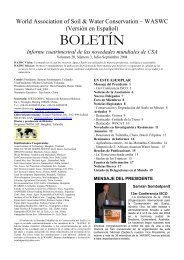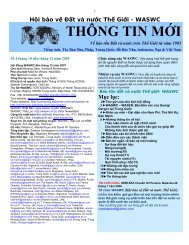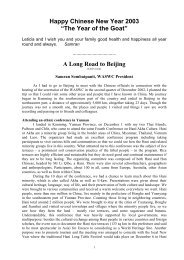Soils of the European Union - European Soil Portal - Europa
Soils of the European Union - European Soil Portal - Europa
Soils of the European Union - European Soil Portal - Europa
You also want an ePaper? Increase the reach of your titles
YUMPU automatically turns print PDFs into web optimized ePapers that Google loves.
4.4 AnthrosolsGeographical distributionBased on <strong>the</strong> SGDBE Anthrosols cover some 3,500 km 2 in <strong>the</strong> EU, predominantly around Belgium, <strong>the</strong> Ne<strong>the</strong>rlands and, toa smaller extent, in north-west Germany. Anthrosols form associations mostly with Podzols, Gleysols and Arenosols (29times as associated and 15 times as inclusion soils).Based on <strong>the</strong> 1:1 M scale database all Anthrosols in <strong>the</strong> EU fall into <strong>the</strong> Plaggic Anthrosol unit. (Table 4.4, Figure 4.4)Table 4.4 Area <strong>of</strong> <strong>the</strong> second level units <strong>of</strong> AnthrosolsUnits in <strong>the</strong> Reference <strong>Soil</strong> Groupin <strong>the</strong> EUCodes <strong>of</strong>soil unitsArea in <strong>the</strong> EUkm 2Plaggic Anthrosol ATpa 3427ATpa100%Figure 4.4 Share <strong>of</strong> <strong>the</strong> second level soil units in <strong>the</strong> area <strong>of</strong> AnthrosolsGlobal referenceThe Reference <strong>Soil</strong> Group <strong>of</strong> <strong>the</strong> Anthrosols holds soils that were formed or pr<strong>of</strong>oundly modified through human activitiessuch as addition <strong>of</strong> organic materials or household wastes, irrigation or cultivation.Plaggic Anthrosols have <strong>the</strong> characteristic horizon plaggic produced by long-continued addition <strong>of</strong> `pot stable' beddingmaterial, a mixture <strong>of</strong> organic manure and earth. The man-made character <strong>of</strong> <strong>the</strong> plaggic horizon is evident from fragments<strong>of</strong> brick and pottery and/or from high levels <strong>of</strong> extractable phosphorus (more than 250 mg P 2 O 5 per kg by 1% citric acid).The formation <strong>of</strong> most plaggic horizons started in <strong>the</strong> medieval times when farmers applied a system <strong>of</strong> `mixed farming'combining arable cropping with grazing <strong>of</strong> sheep and cattle on communal pasture land. In places, <strong>the</strong> system was in use formore than a thousand years evidenced by a plaggic horizon <strong>of</strong> more than 1 meter in thicknessPlaggic and Terric Anthrosols are well-drained because <strong>of</strong> <strong>the</strong>ir thickened A-horizonThe physical characteristics <strong>of</strong> plaggic and terric horizons are excellent: penetration resistance is low and permitsunhindered rooting, <strong>the</strong> pores are <strong>of</strong> various sizes and interconnected and <strong>the</strong> storage capacity <strong>of</strong> available soil moisture ishigh if compared to that <strong>of</strong> <strong>the</strong> underlying soil material. Mild organic matter in <strong>the</strong> surface soil stabilizes <strong>the</strong> structure <strong>of</strong> <strong>the</strong>soil and lowers its susceptibility to slaking. The upper part <strong>of</strong> a plaggic or terric horizon may become somewhat dense iftillage is done with heavy (vibrating) machinery.Different varieties <strong>of</strong> Anthrosols are also known as Plaggen soils, Paddy soils, Oasis soils and Terra Preta do Indio.18


